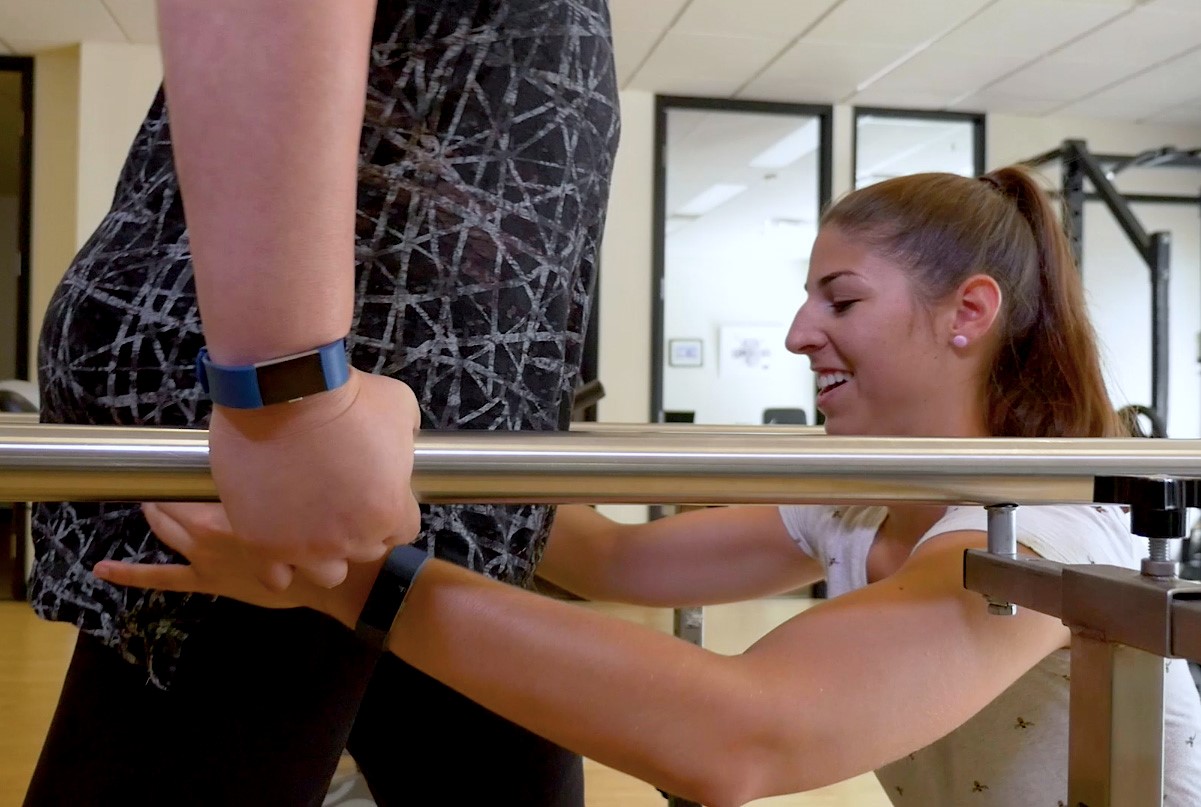Fibromyalgia treatment focuses on symptom management, as there is no cure. Fibromyalgia is a chronic pain condition that significantly affects a person’s physical, emotional, and social well-being. It causes widespread pain and other symptoms that greatly impact quality of life, despite the absence of inflammation or structural damage to muscles, bones, or joints.[i]
In this article, we examine the significant role physiotherapy can play in relieving and managing the symptoms of fibromyalgia, supporting individuals in improving their ability to participate in their everyday lives.
Table of Contents:
- What is Fibromyalgia?
- Physiotherapy Management of Fibromyalgia
- Staying Active with Fibromyalgia
- Tips for Getting Started
- Conclusion
What is Fibromyalgia?
Fibromyalgia is a long-lasting, chronic condition that causes widespread pain throughout the body. It is thought to be linked to the way the brain and spinal cord process both painful and non-painful signals, which may contribute to increased sensitivity to pain in some individuals. Although the exact cause of fibromyalgia is not fully understood, it is believed to involve a combination of genetic, neurological, and environmental factors.[i]
The main symptoms of fibromyalgia include:[ii]
- Chronic, widespread musculoskeletal pain throughout the body or in multiple areas (hallmark symptom).
- Non-restorative sleep or trouble sleeping.
- Significant fatigue.
Other symptoms may include:ii
- Anxiety and depression
- Headaches
- “Fibro Fog” – cognitive difficulties such as memory problems or trouble concentrating.
- Digestive issues.
- Sensitivity to touch, light, sound, and temperature.
- Tingling or numbness in the hands and feet.
While there is currently no cure for fibromyalgia, health care providers can help individuals manage and reduce symptoms. Treatment often includes a combination of exercise or movement-based therapies, psychological and behavioral approaches, and medication.
Check out this video by TownsendTeaching to learn more:
Physiotherapy Management of Fibromyalgia
Physiotherapists can play an important role in managing the symptoms of fibromyalgia by helping to improve quality of life, maintain or enhance strength and range of motion, and support individuals in finding ways to stay active despite pain.
Physiotherapists have access to a variety of treatment modalities and approaches to support individuals with fibromyalgia:[i]
- Exercise: Regular physical activity can help reduce pain, improve function, boost mood, and enhance quality of life. People with fibromyalgia are encouraged to start gradually and choose activities they enjoy and can maintain over time. A physiotherapist can help guide you in finding the right approach and support you in building intensity within your pain limits. Beneficial types of exercise will be explored in the next section.
- Manual Therapy: Manual therapy can help relieve pain, reduce muscle stiffness, and improve overall function. Techniques such as massage, myofascial release, and passive stretching are commonly used. While manual therapy alone is not a cure, it can be beneficial when combined with other treatments like exercise and education. A physiotherapist can tailor manual therapy techniques to your needs and tolerance, ensuring a gentle approach that respects your pain levels.
- Electrophysical agents and complementary therapies: Some people with fibromyalgia may find short-term relief from symptoms like pain and stiffness using treatments such as TENS, laser therapy, or ultrasound. Complementary therapies like acupuncture and mindfulness can also support symptom management and improve well-being, especially when combined with other treatments like exercise and education.
- Health Education: Health education helps individuals better understand their condition and empowers them to take an active role in their care. Education can improve self-efficacy, support lifestyle changes, and reduce fear around movement and pain. Physiotherapists can play a valuable role by providing accurate information, setting realistic expectations, and helping people build strategies to manage their symptoms.
Staying Active with Fibromyalgia
Living with chronic pain and fatigue can make it difficult to stay active, but research consistently shows that regular, gentle movement is one of the most effective ways to manage fibromyalgia symptoms. Exercise has been linked to reduced pain, improved mood, better sleep, and enhanced quality of life.[iii] The key is to start gradually, choose activities you enjoy, and progress at a pace that respects your body’s limits.
The European Journal of Pain systematic review by Casanova‐Rodríguez et al. (2025) found that aerobic exercise, particularly low- to moderate-intensity programs, was especially effective for reducing pain in fibromyalgia. They recommend aiming for at least 100 minutes per week, distributed between two to three sessions lasting 25 to 40 minutes each. Combining aerobic activity with light resistance training and stretching appears to offer the best overall benefits.[iii]
Below are examples of exercise types that are well-supported by research and often well-tolerated by people with fibromyalgia:[i],[iii]
- Walking: a low-impact aerobic activity that is easy to adapt to different fitness levels. It helps improve cardiovascular health, mood and overall endurance without placing too much stress on the joints. Start with short bouts (e.g., 10 minutes) and gradually build up.
- Swimming or Aquatic Exercise: Exercising in water lowers the impact on your joints while still offering resistance for a safe and effective workout.
- Stretching: Gentle stretching can help relieve muscle stiffness, improve range of motion, and reduce tension. It is a great way to ease into movement during flare-up periods.
- Resistance Training: Light strength training can help maintain muscle mass and support joint stability. Using resistance bands or light weights can be effective without overloading the body.
- Yoga: Combines gentle movement, stretching, breathing and relaxation. Yoga may help reduce pain, improve flexibility, and calm the nervous system.
- Tai Chi: a slow, flowing martial art that improves balance, coordination, and mental focus.
- Cycling (stationary or outdoors): offers a cardiovascular workout with minimal joint impact. Stationary bikes allow for safe indoor exercise with the opportunity to easily adjust intensity.
Tips for Getting Started
- Begin with low intensity and short duration, increasing gradually over several weeks.
- Listen to your body. Some mild muscle soreness or stiffness in the day or two after starting a new activity is normal and usually a sign that your muscles are adapting. However, sharp, severe, or worsening pain, especially if it lingers beyond a couple of days, may indicate that you need to reduce intensity or take more rest between sessions.
- Schedule exercise for times of day when your energy is highest.
- Combine aerobic exercise with stretching or relaxation techniques for optimal benefits.[iii]
Conclusion
Fibromyalgia is a complex and challenging condition that can affect many areas of life. However, incorporating movement, education, and self-management strategies can lead to meaningful improvements.
Physiotherapy provides practical tools to help reduce symptoms, enhance physical function, and support long-term well-being. With a gradual and personalized approach, staying active becomes both achievable and beneficial.
Contact us to set up a complimentary phone consultation to learn more about our fibromyalgia treatment or book an assessment to get a personalized treatment plan.
References
[i] Antunes, M. D., & Marques, A. P. (2022). The role of physiotherapy in fibromyalgia: Current and future perspectives. Frontiers in Physiology, 13. https://doi.org/10.3389/fphys.2022.968292
[ii] National Institute of Arthritis and Musculoskeletal and Skin Diseases. (2025, June 5). Fibromyalgia. https://www.niams.nih.gov/health-topics/fibromyalgia
[iii] Casanova‐Rodríguez, D., Ranchal‐Sánchez, A., Rodríguez, R. B., & Jurado‐Castro, J. M. (2025). Aerobic exercise prescription for pain reduction in fibromyalgia: A systematic review and meta‐analysis. European Journal of Pain, 29(2). https://doi.org/10.1002/ejp.4783
Written by








